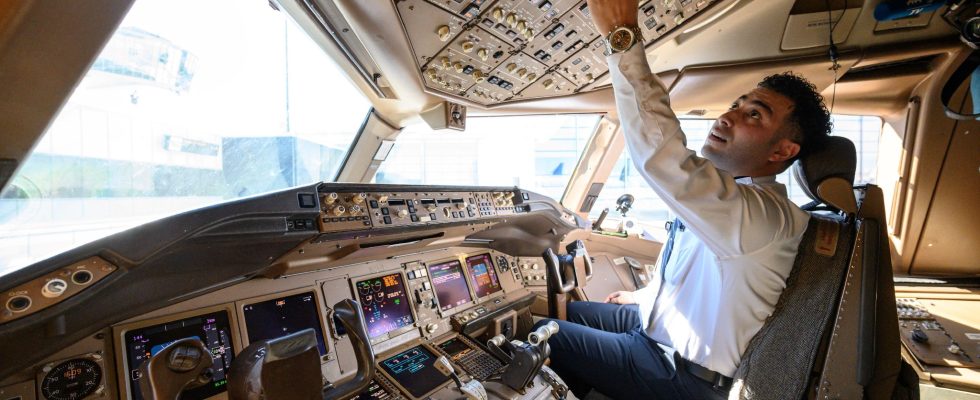It is a 63-page legal expertise, produced in public hearing before the administrative court of Nice this summer, and revealed by The Parisian Friday September 29. It confirms the existence of a phenomenon of air pollution in airplanes that has been well known to the aeronautics industry for decades, but little known to the general public. This pollution is caused by “smoke events” or “fume events”, that is to say the appearance of smoke in the cockpit and cabin of an aircraft.
The potential health effects are known as “aerotoxic syndrome”, caused by the air circulating in planes. As explained The Parisian, smoke emanations mainly result from contamination of the breathable air on board aircraft by components present in synthetic mechanical engine oils. This air passes through the compression zones of the engine and wear of the oil seals can cause such phenomena of varying intensity.
“The resulting exposure can be chronic during normal engine operation or major (higher doses) in the event of ‘smoke/fume/smell events’. There is therefore continuous exposure at variable doses for flight crew and crew members. passengers to these fumes depending on the flight conditions”, relate the authors of this expertise, including several specialists in biochemistry.
Toxicity to the nervous system
The components that can contaminate a device belong to the same family of chemical molecules as those found in certain insecticides and whose toxicity has been the subject of numerous studies, recalls The Parisian. “Among the symptoms reported in aerotoxic syndrome, neurological and respiratory symptoms prevail,” specify the experts: blurred vision, disorientation, headaches, cough, chest tightness for short-term effects; neurodegenerative pathologies for example for medium and long term effects.
Toxicity to the central nervous system has been demonstrated for some of the compounds that are or have been used in these synthetic mechanical oils. These symptoms can be reversible or take a chronic form.
“If ‘smoke/fume events’ cannot therefore be considered as the exclusive cause of the aforementioned attacks in the absence of clear exposure data, numerous evidence confirms that exposures occur (but with insufficient characterization) and that flight attendants present certain health conditions more frequently than other populations”, the authors conclude.
A poorly quantified phenomenon
If the authors cite a study which estimates the frequency of contamination events at 1/2000 flights, they nevertheless emphasize that the phenomenon is poorly quantified because it is under-reported and not always detected in the absence of an appropriate measurement system. Experts add that patients may have been contaminated by these toxic components present elsewhere than in these fumes. Additionally, they state that health risks vary among individuals based on several factors, including the levels and types of products involved, genetic makeup, gender, age, and more.
For all these reasons, note The Parisian, the authors prefer not to get too far ahead. “Questions therefore remain raised regarding long-term risks of neurodegenerative disorders for exposed populations,” they write. In other words, it is difficult to establish an exclusive link between these “smoke events” and the pathologies developed. However, this exclusive link is legally necessary in order to characterize the offenses targeted by the judicial information.
This legal expertise was carried out following a complaint against X with the creation of a civil party filed in 2018 by two former airline pilots. Investigating judges from the public health unit of the Paris judicial court are conducting an investigation into endangering others and unintentional injuries. The Court of Appeal examined on Wednesday September 27 the admissibility of the constitution of civil party of the association of victims of aerotoxic syndrome (AVSA). No indictment has yet been issued.
